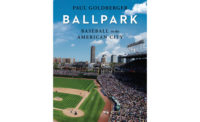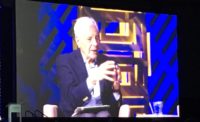Roughly since the election of Andrew Jackson, American politicians have also been brands, competing for mindshare in the markets for “liberal blowhard,” say, or “Second Amendment crank.” In this field Mayor Mike Bloomberg of New York owns the trademark on “apolitical technocrat,” a Northeastern niche market in which the absence of charisma is, like the hand-printed label on a jar of farmer's market jam, a signifier of authenticity.

But the secretive, imperious Bloomberg is also a billionaire whose fortune is tied to the world of international finance, giving rise to suspicions that he is motivated by more than a desire for congestion pricing on the bridges into Manhattan. Julian Brash, an assistant professor of anthropology at Montclair State University, thinks he knows what that motivation is. In Bloomberg's New York: Class and Governance in the Luxury City, he argues that Bloomberg's results-oriented, numbers-driven, post-ideological pragmatism masks an unspoken agenda to advance 'the interests and desires of the postindustrial elites' seeking 'a new class hegemony' over the non-Gulfstream-owning masses.
Is Marxist analysis coming back into fashion? Certainly the last four years have given us ample evidence of what the rich are capable of pulling off behind our backs. But Brash inexplicably devotes half his book to a history of the Bloomberg administration's efforts to redevelop the far west side of Manhattan with a football stadium intended to attract the 2012 Olympics to New York. This was a terrifically important issue if you happened to live in the neighborhood, with significant implications on the future course of development in the city's central business district. But it was just another iteration in the struggle over New York's scarcest resource ' real estate ' that began even before the street grid filled Manhattan. Brash does not convince the reader that Bloomberg's landgrab on behalf of his cronies was any more brazen than, say, Nelson and John D. Rockefeller III's to create Lincoln Center or their brother David's to build the original World Trade Center.
And since it ended with the stadium plan failing by the deus ex machina of a vote by a little-known state board, comprising a handful of politicians from New York's notoriously dysfunctional state legislature, the story is conspicuously lacking in drama, as well as relevance. Nor does it seem like a particularly telling example of how the group Brash calls the 'transnational capitalist class' wields its influence. A new home for the Jets would not, on its face, seem like a particularly vital amenity to the fraternity of international bankers, a class not especially given to tailgate parties. The plan, to be sure, also envisioned tens of millions of square feet of office, residential, and retail space ' a version of which is currently planned over and around the rail yards serving Penn Station. But even the city's real-estate moguls were divided on the redevelopment, with some seeing it as competition for Lower Manhattan neighborhoods still recovering from 9/11. By Brash's account, the stadium was the hobby horse of Bloomberg's powerful deputy, Daniel Doctoroff, who, while watching a World Cup soccer match in 1994, had had the epiphany that what New York needed above all else was to host an Olympiad.
Bloomberg himself disappears from the narrative for long periods, except as a looming symbol of how the austere values of the postindustrial corporation were encroaching on the rich panoply of boodling pols and ethnic hustlers who had dominated New York politics since the 1870s.
Brash has some interesting observations about Bloomberg's propensity to run the city like a business ' in fact, like the business he previously ran, which was privately held, meaning as CEO he was answerable to no one. In what Brash calls 'the Bloomberg Way,' city government was conceptualized as a corporation, with the city itself as the product, other cities as the competition, and businesses, tourists, and residents as customers. Running the city like a corporation meant measuring success the way corporations do, by growth. 'Such compulsion toward growth is inherent in capitalism,' Brash writes, attributing the insight to Marx; Bloomberg's agenda was to 'legitimize the power and wealth' of the ownership class and 'reshape the city in line with its interests and desires.'
You can believe that, if you choose, and still acknowledge that growth provides the tax revenues that keep the city running.Bloomberg's loyalty to the moneyed class did not extend to cutting taxes; his policy was to increase them, to maintain a high level of government services. Service, after all, is how you build a brand, and as customers, we have that, at least, to be thankful for.
Briefly Noted:
Aftermath (2011), by Joel Meyerowitz. Phaidon, 2011, 349 pages, $40.
Given unusual access to Ground Zero right after the terrorist attacks, Joel Meyerowitz photographed the site as it evolved from a smoking mountain of rubble to an urban wound cleaned of debris. For nine months he documented the Herculean tasks of searching for survivors, then removing 1.85 million tons of material. In his text and photographs, Meyerowitz captures the ghastly beauty of the twisted beams and melted facades, and, more important, the remarkable faces of the men and women who cleared the site so it could be rebuilt. First published in 2006, this book is back in stores and our consciousness.
 |
The New York Public Library: The Architecture and Decoration of the Stephen A. Schwarzman Building, by Henry Hope Reed and Francis Morrone. Photographs by Anne Day. W.W. Norton, 2011, 320 pages, $75.
To celebrate the 100th anniversary of the so-called 'People's Palace,' Norton has published an updated edition of Reed's 1986 classic on Carrere and Hastings's Beaux-Arts monument, with new color photography by Anne Day that shows off the building's recent renovation.





Post a comment to this article
Report Abusive Comment